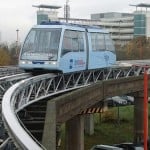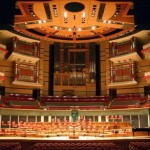- 3 Minute Read
- 30th October 2008
Birmingham City Guide
Population and Landmark…
Birmingham is the largest of England's core cities, and is often considered as the second city of the United Kingdom. The city has a population of around 990,000 but the Birmingham metropolitan area, including Wolverhampton, Coventry and the Black Country, has a population of over 2,500,000.
Birmingham is one of the world’s leading cities for conferences, exhibitions and events. The National Exhibition Centre (NEC) and the National Indoor Arena (NIA) provide an infrastructure superior to any in the UK, with the capability to sustain major events including, in recent years, the World Indoor Championship Athletics and the International Horse of the Year Show. The NEC has hosted events such as the Davis Cup or the G8 Summit. With major facilities such as the International Convention Centre and National Exhibition Centre, the Birmingham area accounts 42% of the UK conference and exhibition trade.
Economy…
 Forecasts suggest that output and productivity are set to grow over the next five years with the service sector and the visitor economy creating up to 50,000 additional jobs in the city in the next 10 years.
Forecasts suggest that output and productivity are set to grow over the next five years with the service sector and the visitor economy creating up to 50,000 additional jobs in the city in the next 10 years.
Birmingham has developed into a national commercial centre that has been recognized by Cushman & Wakefield as the third best place in the UK to locate a business and the 21st in Europe. Two of the leading UK banks were founded in Birmingham: Lloyds Bank and HSBC.
The city's industrial heritage survives to this day, in that Birmingham is still a base for engineering and manufacturing when these are struggling sectors elsewhere in the UK. In fact a huge proportion of UK exports come from Birmingham. Manufacturing will continue to be a key element of the City's economy, with an increasing focus on high-technology production.
Office Space Rental Levels…
Birmingham came out top in the 2007 ranking of serviced office hotspots in the UK, by Search Office Space. The City is far ahead on rival towns and cities when it comes to demand for serviced and managed office space from the business community.
 Birmingham is really coming on strong on the office space market, and the announcement by Development Securities and Grainger of new office space development really cements the long term strategy of becoming the first choice for businesses.
Birmingham is really coming on strong on the office space market, and the announcement by Development Securities and Grainger of new office space development really cements the long term strategy of becoming the first choice for businesses.
A project of 1.4m sq ft of office, residential, hotel and leisure space in the eastside area within the city has just been approved this year, to respond to the high demand in Birmingham. This will be developed on a 10.5 acre site and work will commence towards the end of the year 2008. Phase one will see 120,000 sq ft of office space, a 200 bedroom hotel and retail and leisure space. The total cost for the scheme stands at £400m.
In 2008, the opening of new serviced offices has been announced by several Business Centre Operators, such as Equipoint, to respond to the high demand of flexible office space.
Birmingham aspires to be a world city and has projects in the pipeline that would deliver world class space. The employment growth in the city has been between 3% and 4% per annum, which support the development of all the new space available. The Central Birmingham office market is estimated to contain around 13m sq ft of offices. The market is seen as running from Aston University in the east to Edgbaston in the west, taking in the Eastside schemes, Snow Hill, the traditional centre, Broad Street, Brindley Place and ending at the tower blocks of Hagley Road in Edgbaston.
Transport…
Public transportation in and around the city is primarily by bus. Some suburbs are served by rail links, but these are the exception rather than the rule.
The total distance from Birmingham to London is 102 miles and the total drive time is about 1 hour, 51 minutes.
 Birmingham International Airport is easily accessible by most transport modes. The airport rail station, Birmingham International, is only a two minute ride away on the free Air-Rail Link and is served by frequent national, regional and local rail services.
Birmingham International Airport is easily accessible by most transport modes. The airport rail station, Birmingham International, is only a two minute ride away on the free Air-Rail Link and is served by frequent national, regional and local rail services.The national motorway network is within easy reach; the airport is just one mile from Junction 6 of the M42 with direct links to the M6, M5, M40, M1 and the M6 Toll Road.
The Tourism, Attractiveness of the city…
Tourism is also increasingly important part of the local economy.
Whether it’s Aston Villa and Birmingham City playing host, there’s nearly always a top class game in town at the weekend, which pushes more an more corporate to organize their days out in Birmingham, to see the Premiership games.
With both teams close the city centre, it’s also easy to mix the match with other attractions.
 One of the famous landmarks of the city is Take Symphony Hall. It’s widely regarded as the finest concert hall in Europe. It’s the same with the Birmingham Hippodrome. A £35milion investment made it both the UK’s busiest theatre and helped lure Sadlers Wells Royal Ballet to become the Birmingham Royal Ballet. The city invested a large amount of funds into the cultural board which explains why the galleries, the gig venues and the buoyant theatres offer so much diverse quality.
One of the famous landmarks of the city is Take Symphony Hall. It’s widely regarded as the finest concert hall in Europe. It’s the same with the Birmingham Hippodrome. A £35milion investment made it both the UK’s busiest theatre and helped lure Sadlers Wells Royal Ballet to become the Birmingham Royal Ballet. The city invested a large amount of funds into the cultural board which explains why the galleries, the gig venues and the buoyant theatres offer so much diverse quality.Useful Links…
- Birmingham Guide: www.cityguide.travel-guides.com
- Chamber of commerce: www.birmingham.gov.uk/
